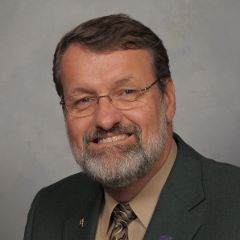July 21, 2015
Milestones and Future for Extension: Part 2

Building upon last week’s message on Milestones and the Future of Extension, I will focus on challenges that were lifted up last week in our panel discussion at the North Central Mini-Land-grant meeting.
Last week, my attention was on three guiding principles for success in current and future Extension programming: on being research-based; on building connections and relationships; and, on innovative, experiential teaching and learning. If you missed that message, go back to the July 14 “Tuesday Letter” and read it first.
This week, I focus more on challenges facing our future that will pull us down unless we are willing to respond and change.
Broadening our resources. Extension derives much of its funding from local county, state, and federal sources. Our future resources will depend on our abilities to bring in external funding streams from various public, private, foundation, and non-governmental sources. This calls for innovation in partnering, and understanding how we retain integrity as a trusted, research-based educational and informational source while partnering and utilizing funds from broad interests. We must look for alternative revenues and exploit those opportunities and take those risks. Without such action, we limit our ability to effectively reach and impact our target audiences with the needed information and educational experiences. Our base of revenue streams widens, or our capacity will decline.
Reaching new audiences. According to Seaman Knapp, Father of Extension, Extension was founded as a means to “create a better people…” Knapp was clearly implying the need for Extension to reach into the underserved and underprivileged segments of society. At that time, the demographic was largely focused on reaching to the struggling, poor, rural families. With success, we not only lift up the rural families, but also lift society by strengthening agriculture and rural families to the benefit of all. Translating to today, we continue to place a great portion of our human resource to continue to serve the rural, agricultural families. Success in the future comes in translating this rural model to focus on solutions to the challenges faced within urban, poorer, or more multi-culturally and socio-economically diverse audiences. Strategies must include expanded volunteer development, partnerships, and effective use of the digital technology world. Without effective interventions reaching into new audiences and emerging issues, Extension will be in decline.
Effective marketing. Extension will function at its best through strong partnering, relationships, and interdependencies. In such an environment, consistent, effective marketing to our stakeholders and influencers locally, regionally, statewide, and nationally is critical. This means that all those persons of influence must be keenly aware of the contributions and importance of Extension both in relation to solving important challenges for the people and in its strength as a connector to Kansas State University and the greater Land-grant University system. Without our telling our story clearly and effectively to make certain the community leaders understand how we resource for our programming, Extension will be in decline.
These are big internal challenges for K-State Research and Extension. I am committed to seeking ways to improve and change the way in which we do business to assure a future for Extension in the generations to come. I know that is ultimately your goal as well. Together we will be successful in addressing each of these challenges. And, have a great week!